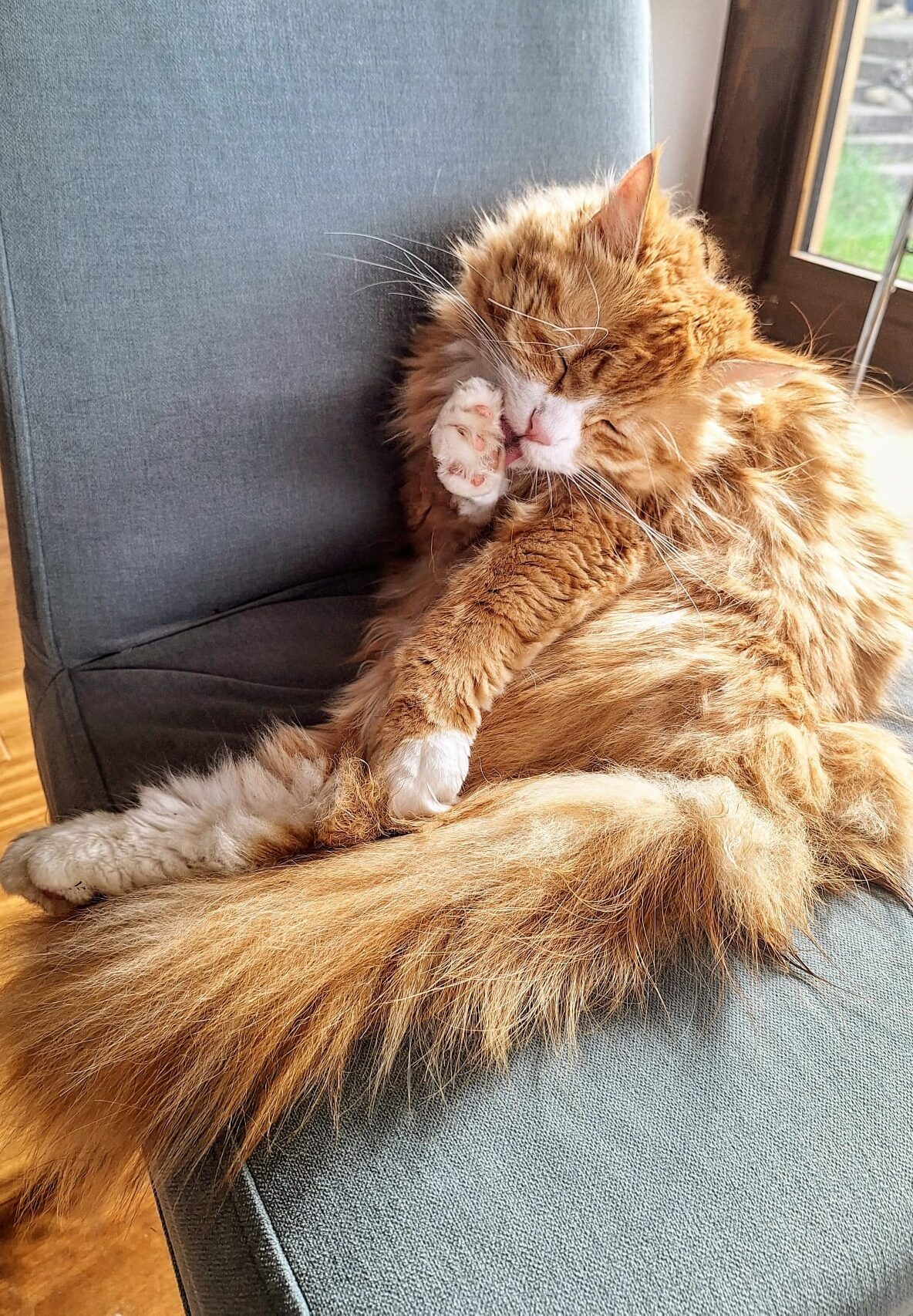🧡 Why Are Orange Cats So… Orange? Science Finally Has an Answer.
At Lekapets, we’ve always had a soft spot for orange cats (our Elvis is a proper specimen of the said subcategory). Whether they’re curled up in a sunny corner or knocking things off your desk with charming indifference, these marmalade-colored mischief-makers tend to stand out. But have you ever wondered why they’re orange in the first place? Turns out, scientists have been wondering the same thing — for over 60 years!

Well, mystery solved.
A new study published in 2024 has finally uncovered the genetic secret behind our ginger kitties. Researchers discovered that a specific 5-kilobase deletion (basically, a tiny missing chunk of DNA) causes the overexpression of a gene called Arhgap36. This gene acts a bit like a light switch for coat color, and when it’s flipped on, the result is that unmistakable orange hue.
The mutation is found on the X chromosome, which helps explain why roughly 80% of orange cats are male. Male cats only have one X chromosome, so if it carries the orange trait, it’s game over (or rather, game on) for their coat color. Female cats, on the other hand, have two X chromosomes, meaning they need both to carry the mutation to be fully orange. Otherwise, they end up with beautiful calico or tortoiseshell coats, a kind of genetic tie-dye effect.
Beyond just being a fun fact for cat lovers, this discovery is also a big deal in the world of animal genetics. Understanding how coat color is determined helps researchers piece together the broader puzzle of feline evolution and heredity. It might even assist in identifying other traits or health markers that are linked to specific genes. For breeders, shelters, and even curious pet parents, this kind of genetic insight opens the door to better understanding and caring for our furry companions. Science isn’t just about the lab, sometimes it’s about unlocking the mysteries behind a purring orange loaf on your sofa.
Now, before you go thinking this orange gene also explains personality quirk, like your cat’s obsession with chasing shadows or their total disregard for personal space, not so fast. The researchers found no link between the orange gene and behavior, intelligence, or mood. So that idea that orange cats are “goofier” or “friendlier”? That’s all anecdotal… and kind of adorable.

At Lekapets, we think this discovery is more than just cool science, it’s a reminder that every pet has a story written in their genes, whether they’re walking with confidence and swagger around in a sunset-colored coat or rocking a classic tabby look. We’re all about celebrating what makes each animal unique, whether it’s genetics, attitude, or an extremely loud purr at 3 a.m. (believe me it happens way to often).
So next time your orange cat climbs into a cardboard box like it’s a life mission, just remember: behind that red coated fur and those golden eyes, 5 kilobases of pure, unfiltered fabulousness feline DNA, are missing.
If your feline friend returns from their outdoor escapades looking more like a mud-spa survivor than that cuddly cat you love, we’ve got just the solution. The Paul Mitchell Pet Tear-Free Shampoo is a gentle, soothing cleanser designed specifically for our furry companions. Formulated with oat protein, mild cleansers, and deodorizers, it effectively removes dirt while maintaining a neutral pH to prevent irritation. Its calming, powdery fragrance with soft floral notes and comforting vanilla leaves your cat’s coat smelling fresh and feeling soft. Perfect for pets of all ages, this shampoo ensures a stress-free bath time, keeping your kitty’s coat clean, shiny, and cuddle-ready.
